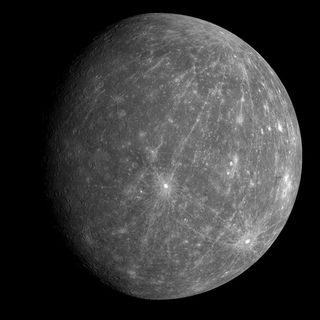Fun factoids
Many of these you will know, but I’m going to tell you anyway.
Like I noted in the introduction, in ancient times the Sun was both worshipped as a god and as a representation of a god, which is to say, the Egyptians for example revered the sun-god Ra, and the Sumerians believed the Sun was Utu, the god of justice and twin brother of the queen of Heaven, Inanna. The Greeks and Romans explained the movement of the Sun across the sky by imagining it was draw in a golden chariot by Helios, who had to rest at night, thus darkness fell. They also were under the mistaken impression that the Sun was a planet, which is why they named the seven days of the week after seven known planets at the time, including the Sun. (These appear to have been the only ones that could be seen with the naked eye - so Mercury, Venus, Mars, Jupiter, Saturn, the Moon and the Sun - oddly, they didn’t include Earth, whether they understood or believed it too was a planet I don’t know).

Norse legend didn’t have much about the Sun, but then, given how damn cold it is up there in Scandinavia, they probably didn’t see it often enough to assign it the importance of a god, though the Chinese believed there were originally ten Suns but they messed around too much in the sky and burned the people, so a hero shot nine of them down, leaving just the one. Weird, but I suppose no weirder than thinking the sun was driven across the sky in a chariot. I mean, who would insure such a daily trip? And whoever they were, I bet Helios lost his no-claims bonus when his son Phaeton snagged the keys and the whole thing went tits-up. But I mean, come on: these people (the Chinese) also explained a solar eclipse as the bite of a magical dragon or dog. Right. Sure they did.

Ah well we Irish weren’t much better. Sure we used to swear that the sun was a woman, honest! Even Christianity took the idea of using December 25 from a sun-worshipping crowd, as explained by the 12th century Syrian bishop Jacob Bar-Salibib (died 1191):
"It was a custom of the Pagans to celebrate on the same 25 December the birthday of the Sun, at which they kindled lights in token of festivity. In these solemnities and revelries the Christians also took part. Accordingly when the doctors of the Church perceived that the Christians had a leaning to this festival, they took counsel and resolved that the true Nativity should be solemnised on that day."

Back in the real world, ultraviolet light from the sun is what causes sunburn if you don’t use the old Factor 500 or whatever, and of course as we all know by now it also causes skin cancer, though it has its good points too, being responsible for varying degrees of human skin pigmentation due to its being filtered through the Earth’s ozone layer at different latitudes. But back to bad stuff, and we all know that despite both U2 and Threshold (who?) writing songs called “Staring at the Sun”, this is bad advice, and can result in temporary or even permanent blindness. That’s just from looking at the sun with your eyes (though your natural defences make you blink and squeeze your eyes shut pretty quickly, so unless you’re really stupid, or want, for some reason, to damage your eyesight, the chances of that happening are relatively low) - try using binoculars or a telescope and say goodbye to those eyes. Just because it’s over 170 million kilometres away doesn’t mean it can’t sear your retinas after a few seconds, so don’t even risk it.

And you might think (though again you’d be an idiot if you did) that it might be safe to look at the Sun during an eclipse, when most of it is blocked by the Moon. But it isn’t. If you’ve ever participated in such an event, you should know that you need special protection even then to look directly at the sun, and you’re placing your eyesight at grave risk if you ignore the safety instructions and don’t take the recommended precautions. Why do you have to do this? Glad you asked.
Despite what we all think, the uncovered portion of the Sun left visible during the eclipse is still as bright as during a normal day, and not only that, but the human pupil opens more to compensate for the loss of light, about three times as wide, which actually allows up to ten times as much light into it as would normally be the case. Finally, you don’t even feel your retinal cells dying. There’s no pain, it just happens, and suddenly you have blind spots and trouble seeing. So basically, don’t take the risk. This even happens during a partial solar eclipse, so just watch it. Or preferably, don’t.

The thing about space exploration is that you really do end up getting bogged down in science-y talk and figures and jargon. The very first book I read to get information about the Sun,
The Inner Solar System: The Sun, Mercury, Venus, Earth and Mars (An Explorer’s Guide to the Universe) by Erik Gregerson bombarded me with so many crazy concepts - electrons, photons, protons and neutrons all doing their thing, this to the power of that, measurements I had never even heard of before, the angle of the ecliptic (well that wasn’t there, but I’ve heard it before and thought I’d use it just to sound brainy. What is it? How the hell should I know?) and chemical symbols all over the place, that I became… what is that word? There’s a word for what happened to me when I read it (or rather, scanned down it, going a little glassy-eyed in the process) - oh yeah. Bored. I got bored.
See, as I said at the beginning, and as the reappearance of the logo above should remind you, although this is to be a voyage of discovery it ain’t a school trip, or an academic attempt to prove this or postulate that, or even a serious attempt to quantify the phenomena of the universe. Nah. This is, primarily, a sight-seeing tour, where I’ll be pointing out items of interest and doing what I can to talk about them without sending you all, and myself, to sleep.
So I am studiously (if that’s not a contradiction in terms, and if it is, then suck it) and deliberately ignoring the harder bits, the ones where these brainiacs go into deep detail and get all science tech and prove they could not only buy and sell me on their subject, but give me away as a free gift. They can do that, and more power to them (to the power of whatever). Me? I just like learning stuff, but not stuff that’s going to crowd out my brain and make it hurt. Therefore, if, as we pull away from the Sun you’re waving your arms and shouting
but but but! You didn’t explain how this works and I want to know about that and I don’t understand the other, just sit down and get a grip, will you? Nobody cares, and if they do, there’s this wonderful thing called the internet where you can find out anything you want and go as deep as makes you happy, but the rest of us will be off enjoying ourselves.
All sounds very frivolous, doesn’t it? Good. While I will be ensuring we all learn the basics about things like planets, comets, galaxies, pulsars and asteroids shaped like dancing moose, I want to keep it interesting but also entertaining, light-hearted and easy to follow. So I guess you might call it
The Universe for Dummies, though if you call me a dummy you may be asked to check that faulty airlock down on deck seven. Unless you’re into science in a heavy way, like Marie, maybe Frownland, a few others, or do it for a living, it’s usually been my experience that too much information can be a real pain and people lose interest very quick. So we’re doing the basics, and no more. You want to find out more, be my guest. The rest of us are just here to enjoy the trip.
So break out the space beer - which is, basically, just beer you drink in space. So, yeah, beer. So break out the beer and let’s visit the neighbours, as we leave the Sun behind and knock on the door of the guy who lives nearest the big yellow one.



 Didn’t you see the logo above? As if.
Didn’t you see the logo above? As if. 












 Hybrid Mode
Hybrid Mode